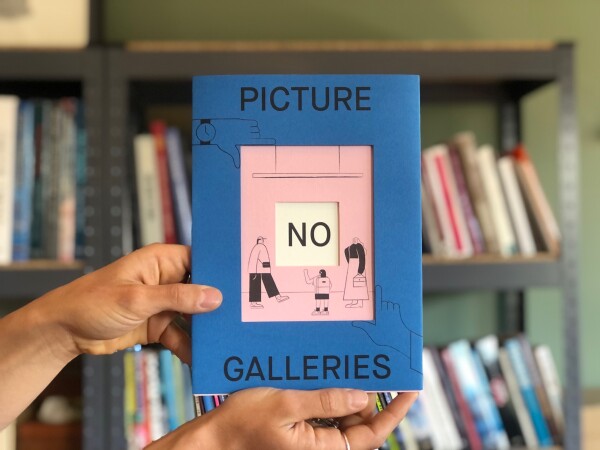
Visit stopthecuts.co.nz
Auckland Council’s draft budget for 2023/2024, proposes to cut $36.5M from regional arts, events, and community initiatives. This will have long-term negative impacts on Auckland’s arts and creative sector, sending our city backwards socially and economically.
But there’s still hope!
If you value living in a city alive with culture art and creativity, we need you to let Council know not to proceed with these cuts.
Visit www.stopthecuts.co.nz for your guide on submissions (due 28 March 2023) and further resources.
The proposed budget includes reducing funding to Tātaki Auckland Unlimited to save a further $27.5 million (nearly $44 million cut), with effects on service delivery (including economic development and tourism promotion) and pricing at venues it manages such as Auckland Zoo, Auckland Art Gallery, and stadiums and venues in Auckland.
We don’t want to lose visual arts specialist expertise which is at risk across all the proposals for cuts Council wide.
Your submission to Auckland Council can be made here.
In 2020 Chartwell published a book advocating for the importance of public galleries: Picture No Galleries.

We hope it may be helpful for you to read (and potentially submit) an excerpt from Picture No Galleries:
"Why Public Galleries Are More Important Than Ever:
1. They support artists and, like artists, art galleries are a pivot in the arts ecosystem Artists are among us! They're neither elusive nor unusual, and most are glad to share what they do with us:
"We [artists] retell, we speculate, we investigate, we chronicle, we create, we instigate, we fabricate, we activate, we procrastinate, and we decorate." Telly Tuita, on Objectspace's Instagram, 24 March 2020.
Aotearoa New Zealand's public art galleries are a key pivot in the arts ecosystem. They support artists by acquiring, showing and explaining what they do, building collections that provide a context for their work. They endorse what artists do and provide the context they need to produce ambitious and innovative new work.
2. They promote critical discussion and learning
Art galleries create and feed audiences by producing exhibitions which are talking points, sparking discussion that builds bridges between artists and communities.
Galleries nurture expertise, both internally and externally, building teams who can explain and engage. Fostering a love and understanding of art in turn attracts patrons and supporters willing to give works and offer other kinds of support.
Galleries create opportunities for art to be written about, reviewed, dissected and studied. Critical and academic discussion is important to the overall art ecosystem, promoting a healthy respect for what is being made and shown.
And, at all levels of the education system, great teachers prioritise curiosity, creativity, experimentation and reflection - helping develop art audiences now and for the future. Increasingly, business and civic leaders recognise how imaginative thinking ensures success in a variety of fields.
Public art galleries are at the centre of this complex social, economic and cultural network.
3. They're destinations
Here and elsewhere, public art galleries are a vital part of how cities and towns present themselves. There's at least one major collecting gallery in each main centre, and many in smaller towns as well. Galleries play a key role in cultural tourism and feature on the 'to do' lists for many visitors to the city. They create exhibitions which speak to both visitors and se communities, making locals proud by revealing their place, its history and taonga.
In a post-COVID-19 world, in which major touring exhibitions are less likely, the focus will shift to locally-held collections. To continue to make a valuable economic, social and educational contribution to their communities. art galleries must develop collections worth seeing now and in the future.
4. As well as being tourism performers, they drive a unique economy
Our galleries directly employ a good proportion of workers - and provide stimulating work for local volunteers. Their purchasing power and advocacy creates opportunities not just for artists but for the wider industry: the manufacturers, suppliers, fabricators, framers, crate builders, freight companies, printers. designers, technicians, dealer galleries, and a myriad of other specialists who together make up the art world.
5. They're communal spaces, making connections
As much as public art galleries used to be 'pavilions in the park' or sit like temples on a hill-top location, now galleries prefer being in the central city. But, wherever they are, their collections operate like springboards for our cultural engagement.
Art galleries are active communal spaces, overflowing with life and events for younger and older people alike. They support learning at all levels and offer varied outreach programmes for their communities. They're often busy but, if you want to go it alone, they offer emotional and intellectual nourishment as you muse and imagine. Galleries are an enjoyable option for spending leisure time and meeting others, or for winding down during stressful times. They encourage a sense of belonging, which is more important now than ever.
Gallery cafés, restaurants and shops are often busy and great places to meet. Many galleries offer good spaces for after-hours functions, conferences and special events.
6. They are all about access - they're ours and they're free!
Public art galleries in Aotearoa are funded either through central government (Te Papa) or through local councils (the rest). There is no question that a gallery's collections belong to the community which funds them. City councils, directors and gallery staff are trusted with caring for these for future generations; they're kaitiaki or guardians with a shared responsibility for the city's collections.
Art galleries are open most days and - like our botanic gardens and parks - they're proudly free (except for the occasional special exhibition). By providing free access, art galleries help grow an understanding that the collections really are for everyone.
Standing up for free entrance means that galleries:
- reduce 'threshold fear and barriers to local access;
- demonstrate their commitment to equity and access for all;
- enable locals to visit often and spend 15 minutes or 5 hours;
- value the free social media marketing which younger visitors provide;
- make out-of-towners feel warmly welcome as guests of our city; and
- kick the idea that art is elite or highbrow well into the background where it belongs!
Most galleries also provide access to works of art in their care by publishing in print and online, although technological upgrades and cataloguing assistance are needed in some places. They also lend works to other public galleries regularly for specific exhibitions on a cost-recovery basis, enhancing their cultural value and reach.
7. Sometimes galleries challenge and provoke
Advancements in any field involve taking risks and exploring different solutions. Creative thinking and art-making are no different, so sometimes we need to remind ourselves that
- good art can cause ripples within a community; and
- good art galleries will still want to show it
Standing alongside artists whose work may be challenging - deliberately or not - needs thinking through by a publicly funded gallery
Can gallery staff support the debate and any predictable fall-out? How do they make visitors aware of what they'll see and provide a context for the work if it's unusually provocative?
Art can cause discomfort; it may get under our skin and reveal other sides of a debate. Astute city-wide cultural leadership and supportive governance are needed throughout.
8. Galleries respond to community debates and help us face current realities!
Galleries used to think of themselves as neutral spaces, with their white walls and clean spaces reinforcing an ideology of separation from the outside world. Very few assert this position now. Rather, in an era of increasing diversity, public art galleries recognise they need to join and, on occasion, lead the debates that coming to terms with a fair and equitable future require. So it's good to see art galleries rising to the various political, ethical and ecological challenges in the community.
"To address structural racism and the inequalities underpinning society, we have a responsibility to act." Maria Balshaw, director, Tate Galleries, Statement, 13 June 2020, on Tate's commitment to racial equality following the killing of George Floyd in Minneapolis on 25 May 2020.
9. They're healing
Art is a fundamentally human activity, practised from the beginning of time and in varying forms across all cultures. Both making art and looking at art are linked to our personal health and wellbeing, to the way we learn, and to how we communicate and understand ourselves and each other. Art-making opportunities are now provided in a range of contexts - from schools to prisons, in hospitals and retirement villages.
The arts are healing balms because at their heart is a celebration of life, a celebration of the possibility of joy, of wonder, of beauty. In the coming days, as the fragility of life is...threatened, the arts will be part of what puts us back together.
Peter O' Connor (The Big Idea, 1 April 2020)
Similarly, visiting art galleries is increasingly considered to be healing. Recent studies point to improvements to mental health, decreases in levels of anxiety, isolation and depression, and how greater self-esteem comes from exposure to art through gallery visits.
The public art gallery is a gymnasium for the mind.
Robert Gardiner CNZM, Chartwell Trust.
